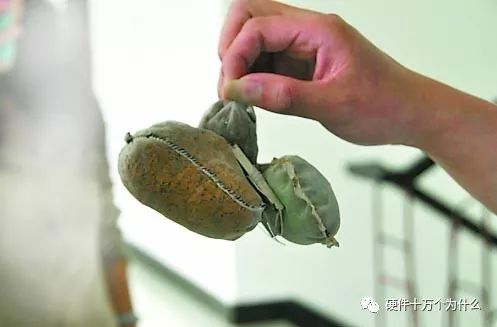Can you believe it? A fist-sized mesh bag, when placed in a pool of gold salt solution overnight, can absorb dozens or even hundreds of grams of gold, and the secret lies in the specially made mesh bag. Astonishingly, seven workers stole 8 kilograms of gold over a year, netting over 2 million yuan. This is reportedly the first case in the country to use chemical methods to steal gold.

Strange Incident: Abnormal Consumption of Gold Salt, Unable to Identify the Problem
The story begins in October last year. At that time, the head of an electronics company revealed that the loss of potassium cyanide gold salt solution used for gold plating on the production line was unusually high, consuming much faster than usual. Potassium cyanide is something very unfamiliar to the average citizen, but it is a very expensive gold plating solution that is highly toxic, used for electroplating gold on circuit boards and motherboards to enhance stability, commonly used in mobile phones and computers.
The company head was troubled by the rapid consumption of the electroplating solution but could not find out where the problem lay. After some investigation, it was discovered that a young man in the area was selling high-purity gold powder, “which is likely related to this.”

Gold-absorbing mesh bag made by the suspects
This company had employees working on the gold plating line who could easily access the expensive solution. The police extracted the information of all employees on the gold plating line and conducted interviews in the area, allowing some citizens to identify individuals.
Quickly, someone recognized that the mysterious man selling gold powder irregularly was an employee of the gold plating line, named Shi. In the following week, some plainclothes officers appeared near the precious metal purchasing points, posing as shoeshiners, newspaper vendors, and film applicators. After long-term observation, the plainclothes officers gathered substantial evidence and successfully arrested 11 suspects.
Over more than a year, seven employees working on the gold plating line used the chemical reaction of the “gold-absorbing ball” to steal 7-8 kilograms of gold and sold it to four dealers, including Wang, at prices tens of yuan below the daily gold market price, making over 2 million yuan in illicit profits, while the four dealers made hundreds of thousands by profiting from the price difference.
Gold Absorption Method: Specially Made “Gold-absorbing Ball” that Absorbs Gold through Chemical Reaction
How does a fist-sized mesh bag extract gold from the gold plating solution? The secret lies in the suspects’ specially made “gold-absorbing ball.”
They packed more reactive metal fragments into the mesh bag to create the “gold-absorbing ball,” tying it to some weights to let the bag sink to the bottom of the gold absorption pool, making it hard to detect. In just one night, these fist-sized bags undergo a miraculous chemical reaction, with the reactive metals turning into a solution that absorbs tiny gold particles into the bag. A single bag can typically absorb 50-60 grams of gold, and under optimal concentration and reaction speed, it can even absorb over a hundred grams of gold.
After the dealers obtained the crude gold, they placed it in “aqua regia” (the strongest corrosive acid) to form a high-purity gold solution, which they then dried with a spray gun to obtain gold with a purity of over 95%.
Collusion between Master and Apprentice to Steal Gold
27-year-old Gao is one of the main suspects. He and another worker, Du, are from Hubei. In 2008, Du told him that gold could be stolen using chemical methods for quick wealth. That year, Gao started working on the gold plating line at an electronics factory in Shenzhen, secretly learning the craft.
In 2011, Gao was hired by this company in Xiyong, spending six months understanding the production line and company management rules, and then began to steal gold on a large scale, making over 400,000 yuan in profits in the following six months.
“I was indeed afraid; this method was not known to just me,” Gao admitted. In the spring of 2012, when he left the company, he left himself a way to make money—starting his own gold collection business, training several apprentices to continue stealing gold and sending it to him.

Nickel-Gold Plating
In fact, gold plating can be divided into hard gold and soft gold. Hard gold plating is essentially an alloy plating (which means it is plated with Au and other metals), so it is harder and suitable for areas that require resistance to friction. In the electronics industry, it is generally used as contact points on circuit boards (commonly known as “gold fingers,” as shown in the first image); while soft gold is generally used for aluminum wire bonding on COB (Chip On Board) or the contact surfaces of mobile phone buttons, and has recently been widely used on both sides of BGA substrates.
To understand the origins of hard gold and soft gold, it is best to first have a brief understanding of the plating process. Without discussing the earlier acid washing process, the basic purpose of plating is to deposit “gold” onto the copper surface of the circuit board. However, “gold” cannot react directly with the copper surface, so a layer of “nickel” must be plated first, and then gold is plated on top of the nickel. Therefore, what we generally refer to as gold plating should actually be called “nickel-gold plating.”
The difference between hard gold and soft gold lies in the composition of the final layer of gold plated. During gold plating, one can choose to plate pure gold or an alloy, as pure gold is softer, hence referred to as “soft gold.” Since gold and aluminum can form a good alloy, COB requires a specific thickness of this pure gold layer when bonding aluminum wires.
Additionally, if one chooses to plate gold-nickel alloy or gold-cobalt alloy, the alloy is harder than pure gold, hence referred to as “hard gold.”
Plating Procedures for Soft Gold and Hard Gold:
Soft Gold: Acid Wash → Nickel Plating → Pure Gold Plating
Hard Gold: Acid Wash → Nickel Plating → Pre-plating Gold → Gold-Nickel or Gold-Cobalt Alloy Plating
Gold Chemical Treatment
Currently, gold chemical treatment mostly refers to the ENIG (Electroless Nickel Immersion Gold) surface treatment method. Its advantage is that it can attach nickel and gold to the copper surface without using an electroplating process, and its surface is also smoother than electroplated gold, which is especially important for increasingly miniaturized electronic components and components requiring flatness.
Since ENIG uses a chemical displacement method to create the surface gold layer, the maximum thickness of the gold layer cannot reach that of electroplated gold, and the gold content decreases towards the bottom layer.
Because the gold layer of ENIG is considered pure gold, it is often classified as “soft gold,” and it is also used for surface treatment in COB aluminum wire bonding, but it must strictly require that the gold layer thickness be at least above 3-5 microinches (μ”). Generally, a gold layer exceeding 5μ” is hard to achieve; a too-thin gold layer will affect the adhesion of aluminum wires; while general electroplated gold can easily achieve thicknesses above 15 microinches (μ”). However, the price will also increase with the thickness of the gold layer.
Flash Gold
The term “flash gold” comes from Flash, meaning rapid gold plating. It is actually the pre-plating process of electroplated hard gold. Referring to the nickel-gold plating process description, it uses a larger current and a more concentrated gold solution to first form a finer but thinner gold layer on the nickel layer, facilitating subsequent gold-nickel or gold-cobalt alloy plating. Some people see this and think they can produce PCBs with gold plating at a lower cost and shorter time, so some “flash gold” PCBs have been sold.
Because “flash gold” lacks the subsequent gold plating process, its cost is much cheaper than true electroplated gold, but because its gold layer is very thin, it cannot effectively cover the nickel layer underneath, making it more prone to oxidation during storage, thus affecting solderability.
Among the many surface treatment methods for circuit boards, the cost of nickel-gold plating is relatively high compared to other surface treatment methods (such as ENIG, OSP), so it is now less commonly used unless for special purposes, such as contact surface treatment for connectors and requirements for sliding contact components (like gold fingers, etc.); however, in terms of current circuit board surface treatment technology, the plating layer of nickel-gold still has unmatched excellent wear resistance and oxidation resistance.